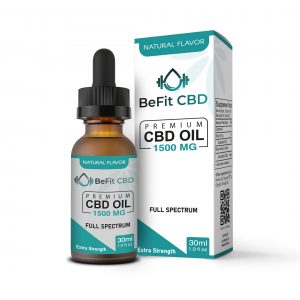CBG vs. CBD – The Differences and Similarities
When you thought you’d heard all there is about cannabis and its components, scientists say otherwise.
Medical experts are currently investigating the potential effects of the diverse compounds in cannabis. Interestingly, the results so far look promising.
This article offers a brief but comprehensive look at CBG and its medical possibilities; in comparison with the all-popular CBD.
What is CBG?
CBG, just like CBD, is another compound found in the cannabis plant. Short for cannabigerol, CBG is a non-psychoactive compound in hemp. This compound is mainly produced in cannabis plants during their infancy.
Early research says CBG interacts with the physiological system and offers remarkable results. When used alongside CBD, the effect may be more potent.
How Cannabinoids Are Formed – Explained
CBG is commonly referred to as ‘stem cell’ or the ‘mother cannabinoid’ of the cannabis plant. The compound is so nicked for being the first chemical to occur before it transforms into other compounds.
Cannabinoids start out as Cannabigerol Acid or CBGA. As the plant matures, the compound converts into CBDA, THCA, or CBCA.
During decarboxylation, the compounds lose their carboxyl acid to become CBD, THC, and CBC.
This is why CBG is extracted at the plant’s early stage – to obtain rich CBG extracts. If not harvested timely, CBG might have turned into a different compound.
Since CBG literally ‘births’ other cannabinoids, it may be fair to refer to it as the mother cannabinoid.
The short occurring span makes the CBG scarce. For clarity, while the hemp plant contains only about 1% CGB, CBD dominates as high as 20%. So, apparently, obtaining a good enough quantity of CBG from the hemp is no cakewalk. You can then imagine the troubles of CBG-based farmers, which makes CBG notably scarce.
CBG Vs. CBD
While CBG and CBD may offer similar potentials, they also have some peculiarities.
For their similarities: they both occur in the cannabis plant and binds with the endocannabinoid system to offer specific effects.
Some experts think, although found in low concentration, CBG may be more potent than CBD. However, CBD-CBG synergy may create a better effect than when either compound is used in isolation. So, you may prefer products that contain both compounds.
So, when it comes to CBD and CBG, here’s what to note: while both compounds look promising individually, they may offer more when brought together.
Quickly, let’s compare and contrast between CBG and CBD.
CBD and CBG Similarities
Both compounds are:
- Obtained from the cannabis plant.
- Interact with the Endocannabinoid System.
- Non-intoxicating – i.e., either won’t get you high.
- Potentially therapeutic, according to research.
Differences
- CBG occurs but in remarkably low concentrations. CBG: CBD stands at about a 1:20 ratio.
- CBG interacts with the CB1 receptor and CB2.
- CBG occurs in the early phase of the cannabis plant.
- CBG transforms into other chemical compounds, hence the ‘mother cannabinoids’ tag.
Final Thoughts
While the spotlight has always been on CBD and THC, lately, researchers seem to be branching out to other compounds – like CBG.
Although the compound might have attracted but a few studies due to its petite concentration, its purported benefits deserve good attention. While CBG looks promising independently, when dosed with CBD, expect an unmatched potency.

 FREE SHIPPING ON ALL PRODUCTS
FREE SHIPPING ON ALL PRODUCTS


